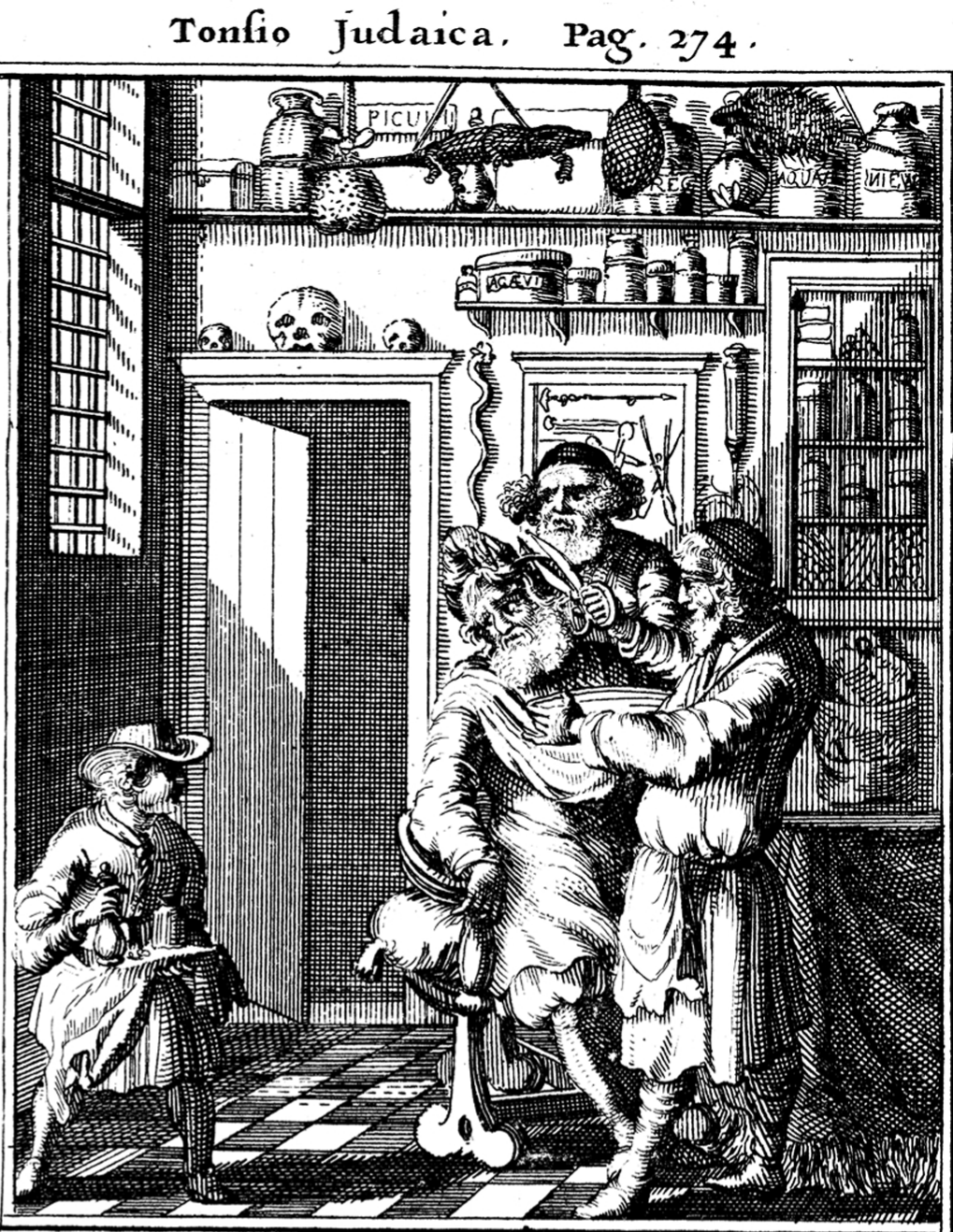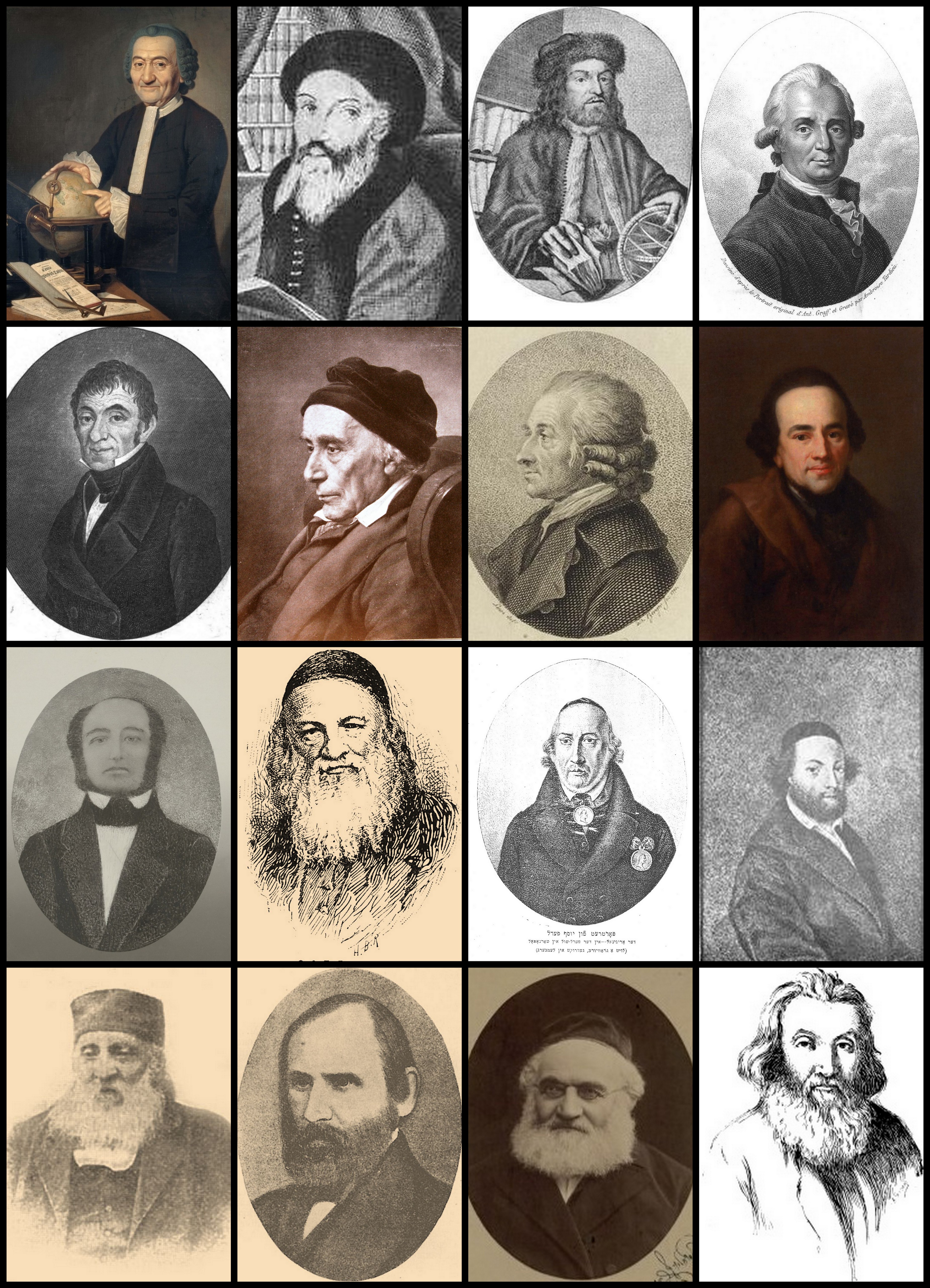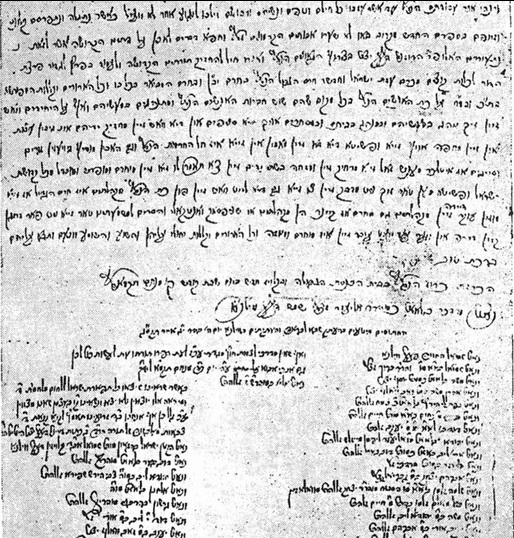|
Temerl Bergson
Temerl Bergson (also spelled Tamarel; Hebrew name Tamar; surname alternately Sonnenberg or Berekson; he, תמריל ברגסון, died 1830) was a Polish Jewish businesswoman. She was a supporter of Jews living in Warsaw and patroness of the Hasidic movement in Poland. She was renowned for her largesse in her philanthropy toward Polish Hasidic leaders and tzadikim, and was said to have "distributed money like ashes". Referred to as the " Doña Gracia of Hasidism", she is credited with the success of the Hasidic movement in Poland in the early 19th century. Early life and marriages Temerl's father, Avraham of Opoczno, Poland, was said to be "learned and extremely wealthy". She had a sister who married Rabbi Moshe Simcha of Opoczno. Temerl was married at a young age to Jacob Jacobson, a Warsaw merchant; they had one son, Hirsch, before Jacobson died. The young widow remarried in February 1787 to Dov (Berek) Sonnenberg (1764–1822) son of Shmuel Zbitkower. Berek changed his surna ... [...More Info...] [...Related Items...] OR: [Wikipedia] [Google] [Baidu] |
Hasidic Judaism
Hasidism, sometimes spelled Chassidism, and also known as Hasidic Judaism (Ashkenazi Hebrew: חסידות ''Ḥăsīdus'', ; originally, "piety"), is a Judaism, Jewish religious group that arose as a spiritual revival movement in the territory of contemporary Western Ukraine during the 18th century, and spread rapidly throughout Eastern Europe. Today, most affiliates reside in Israel and the United States. Israel Ben Eliezer, the "Baal Shem Tov", is regarded as its founding father, and his disciples developed and disseminated it. Present-day Hasidism is a sub-group within Haredi Judaism and is noted for its religious conservatism and social seclusion. Its members adhere closely both to Orthodox Judaism, Orthodox Jewish practice – with the movement's own unique emphases – and the traditions of Eastern European Jews. Many of the latter, including various special styles of dress and the use of the Yiddish language, are nowadays associated almost exclusively with Hasidism. Hasi ... [...More Info...] [...Related Items...] OR: [Wikipedia] [Google] [Baidu] |
Shmelke Of Nikolsburg
Shmuel Shmelke HaLevi Horowitz of Nikolsburg (Yiddish: שמואל שמעלקי הלוי הורוויץ פון ניקאלשפורג, ; 1726 – April 28, 1778) also known as the Rebbe Reb Shmelke was an early Hasidic master and kabbalist, who is amongst the most important figures to early Polish Hasidism. A leading disciple of Dov Ber of Mezeritch, he held rabbinic positions in Rychwal and Sieniawa, where he successfully introduced Hasidic Judaism to the region. From 1773 to 1778, he served as the Chief Rabbi of Moravia, basing himself in the town of Nikolsburg (Mikulov), where he introduced Hasidic philosophy to the chagrin of the city's conservative Misnagdic population. Despite efforts to depose him from his office, he was nevertheless mostly successful in introducing Hasidic Judaism to Moravia. He is the progenitor of the Nikolsburg Hasidic dynasties which includes Boston Hasidism. Rabbinic carrier in Poland Shmuel Shmelke Horowitz was born in Czortków (now Ukraine) a ... [...More Info...] [...Related Items...] OR: [Wikipedia] [Google] [Baidu] |
Payot
''Pe'ot'', anglicized as payot ( he, פֵּאוֹת, pēʾōt, "corners") or payes (), is the Hebrew term for sidelocks or sideburns. Payot are worn by some men and boys in the Orthodox Jewish community based on an interpretation of the Tanakh's injunction against shaving the "sides" of one's head. Literally, ''pe'a'' means "corner, side, edge". There are different styles of payot among Haredi or Hasidic, Yemenite, and Chardal Jews. Yemenite Jews call their sidelocks ''simanim'' (), literally, "signs", because their long-curled sidelocks served as a distinguishing feature in the Yemenite society (differentiating them from their non-Jewish neighbors). Rabbinic interpretation Reason According to Maimonides, shaving the sidelocks was a heathen practice. Specifics The Torah says, "you shall not round off the ''pe'a'' of your head ()". The word ''pe'a'' was taken to mean the hair in front of the ears extending to beneath the cheekbone, on a level with the nose (Talmud – Makkot 20a ... [...More Info...] [...Related Items...] OR: [Wikipedia] [Google] [Baidu] |
Reb (Yiddish)
Reb ( yi, רב, ) is a Yiddish or Hebrew honorific traditionally used for Orthodox Jewish men. It is not a rabbinic title.Reading Hebrew Tombstones jewishgen.org In writing it is abbreviated as ר׳. On a , ב'ר is an abbreviation for ''ben/bat reb'' meaning "son/daughter of the worthy..." Reb may also be a short form of . It is generally only used for married men, sometimes an equivalent of "Mr." A never-married man is referred to as ''Habachur.'' History The title was adopted by Jews at the time of the schism with the[...More Info...] [...Related Items...] OR: [Wikipedia] [Google] [Baidu] |
Haskalah
The ''Haskalah'', often termed Jewish Enlightenment ( he, השכלה; literally, "wisdom", "erudition" or "education"), was an intellectual movement among the Jews of Central and Eastern Europe, with a certain influence on those in Western Europe and the Muslim world. It arose as a defined ideological worldview during the 1770s, and its last stage ended around 1881, with the rise of Jewish nationalism. The ''Haskalah'' pursued two complementary aims. It sought to preserve the Jews as a separate, unique collective, and it pursued a set of projects of cultural and moral renewal, including a revival of Hebrew for use in secular life, which resulted in an increase in Hebrew found in print. Concurrently, it strove for an optimal integration in surrounding societies. Practitioners promoted the study of exogenous culture, style, and vernacular, and the adoption of modern values. At the same time, economic production, and the taking up of new occupations was pursued. The ''Haskalah'' pr ... [...More Info...] [...Related Items...] OR: [Wikipedia] [Google] [Baidu] |
Polish Złoty
The złoty (; abbreviation: zł; code: PLN) is the official currency and legal tender of Poland. It is subdivided into 100 grosz (''gr'').Singular: ''grosz'', alternative plural forms: ''groszy'', ''grosze''. The widely recognised English form of the currency name is the Polish zloty. It is the most traded currency in Central and Eastern Europe and ranks 22nd most-traded in the foreign exchange market. The word złoty is a masculine form of the Polish adjective 'golden', which closely relates with its name to the guilder whereas the grosz subunit was based on the groschen, cognate to the English word groat. It was officially introduced to replace its predecessor, the Polish mark, on 28 February 1919 and began circulation in 1924. The only body permitted to manufacture or mint złoty coins is Mennica Polska, founded in Warsaw on 10 February 1766. As a result of inflation in the early 1990s, the currency underwent redenomination. Thus, on 1 January 1995, 10,000 old złoty (PLZ) ... [...More Info...] [...Related Items...] OR: [Wikipedia] [Google] [Baidu] |
Ruble
The ruble (American English) or rouble (Commonwealth English) (; rus, рубль, p=rublʲ) is the currency unit of Belarus and Russia. Historically, it was the currency of the Russian Empire and of the Soviet Union. , currencies named ''ruble'' in circulation include the Belarusian ruble (BYN, Rbl) in Belarus and the Russian ruble (RUB, ₽) in Russia. Additionally, the Transnistrian ruble is used in Transnistria, an unrecognized breakaway province of Moldova. These currencies are subdivided into one hundred Kopek, kopeks. No kopek is currently formally subdivided, although denga, ''denga'' (½ kopek) and polushka, ''polushka'' (½ denga, thus ¼ kopek) were minted until the 19th century. Historically, the grivna, ruble and denga were used in Russia as measurements of weight. In 1704, as a result of monetary reforms by Peter the Great, the ruble became the first Decimalisation, decimal currency. The silver ruble was used until 1897 and the gold ruble was used until 1917. The ... [...More Info...] [...Related Items...] OR: [Wikipedia] [Google] [Baidu] |
Misnagdim
''Misnagdim'' (, "Opponents"; Sephardi pronunciation: ''Mitnagdim''; singular ''misnaged''/''mitnaged'') was a religious movement among the Jews of Eastern Europe which resisted the rise of Hasidism in the 18th and 19th centuries. The ''Misnagdim'' were particularly concentrated in Lithuania, where Vilnius served as the bastion of the movement, but anti-Hasidic activity was undertaken by the establishment in many locales. The most severe clashes between the factions took place in the latter third of the 18th century; the failure to contain Hasidism led the ''Misnagdim'' to develop distinct religious philosophies and communal institutions, which were not merely a perpetuation of the old status quo but often innovative. The most notable results of these efforts, pioneered by Chaim of Volozhin and continued by his disciples, were the modern, independent ''yeshiva'' and the Musar movement. Since the late 19th century, tensions with the Hasidim largely subsided, and the heirs of ''M ... [...More Info...] [...Related Items...] OR: [Wikipedia] [Google] [Baidu] |
Israel Yitzhak Kalish
Israel Yitzhak Kalish of Warka (Yitzchok of Vurka) (1779–1848) was the first hasidic rebbe of Warka. In 1829 he moved to Przysucha, where his master tzadik Simcha Bunim of Peshischa was teaching. Eventually he settled in Warka. Together with rabbi Yitzchak Meir Alter from Ger, he coped with Russian ukases (decrees), prohibiting wearing traditional Jewish clothes. Personal life His sons were Yaakov David Kalish, founder of the Amshinov hasidic dynasty in Mszczonów, and Menachem Mendel Kalish, his successor in Warka. Death He died in 1848. An ohel (small prayerhouse-like structure built over the grave) was constructed in 1990 in honor of the Rabbi in the Polish town of Warka, where he is buried. Notable Disciples * Rabbi Moshe Biderman of Lelov (1776-1851) * Rabbi Shraga Fayvel Dancyger (d. 1848) of Aleksander * Rabbi Yaakov Aryeh Guterman of Radzymin (1792-1874) Bibliography * Martin Buber Martin Buber ( he, מרטין בובר; german: Martin Buber; yi, מאר� ... [...More Info...] [...Related Items...] OR: [Wikipedia] [Google] [Baidu] |
Simcha Bunim Of Peshischa
Simcha Bunim Bonhardt of Peshischa (Yiddish: שמחה בונם בונהרט פון פשיסכע, ; – September 4, 1827) also known as the Rebbe Reb Bunim was the second Grand Rabbi of Peshischa ( Przysucha, Poland) as well as one of the key leaders of Hasidic Judaism in Poland. The main disciple of R. Yaakov Yitzchak Rabinowicz ("the Yid Ha-Kadosh"), from 1813 to 1827, he led the Peshischa movement of Hasidic thought, in which he revolutionized 19th-century Hasidic philosophy by juxtaposing the rationalistic pietism of German-Jewry with the spiritual nature of God defined by the Hasidic movement. Bunim was instrumental in challenging the Hasidic status quo, in which he paired enlightenment philosophy with traditional Orthodox Judaism while controversially emphasizing the importance of the individual in regards to one's personal relationship with God. He outwardly challenged the dynastic and autocratic nature of Hasidic rebbes and encouraged the democratization of Judaism, ... [...More Info...] [...Related Items...] OR: [Wikipedia] [Google] [Baidu] |
Menachem Mendel Of Kotzk
Menachem Mendel Morgensztern of Kotzk, better known as the Kotzker Rebbe and the Kotzker (1787–1859) was a Hasidic rabbi and leader. Life Born to a non-Hasidic family in Goraj near Lublin, Poland, he became attracted to Hasidic philosophy in his youth. He was known for having acquired impressive Talmudic and Kabbalistic knowledge at an early age. He was a student of Reb Bunim of Peshischa, and upon the latter's death attracted many of his followers. Morgensztern was well known for his incisive and down-to-earth philosophies, and sharp-witted sayings. He appears to have had little patience for false piety or stupidity. From 1839 he lived in seclusion for the last twenty years of his life. Students and legacy The Kotzker Rebbe never published any works. He wrote many manuscripts, but he had them all burned before his death. Several collections of his sayings have been published, most notably ''Emes VeEmunah'' (Truth and Faith). The Kotzker Rebbe's disciple Rabbi Avrohom Born ... [...More Info...] [...Related Items...] OR: [Wikipedia] [Google] [Baidu] |
Ger (Hasidic Dynasty)
Ger (Yiddish: גער, also Gur, adj. Gerrer) is a Polish Hasidic dynasty originating from the town of Góra Kalwaria, Poland, where it was founded by Yitzchak Meir Alter (1798–1866), known as the "Chiddushei HaRim". Ger is a branch of Peshischa Hasidism, as Yitzchak Meir Alter was a leading disciple of Simcha Bunim of Peshischa (1765–1827). Before the Holocaust, followers of Ger were estimated to number in excess of 100,000, making it the largest and most influential Hasidic group in Poland. Today, the movement is based in Jerusalem, and its membership is estimated at 11,859 families, as of 2016, most of whom live in Israel, making Ger the largest Hasidic dynasty in Israel. However, there are also well-established Ger communities in the United States and in Europe. In 2019, some 300 families of followers led by Shaul Alter, split off from the dynasty led by his cousin Yaakov Aryeh Alter. History In his early years, Yitzchak Meir Alter became a close disciple of Simch ... [...More Info...] [...Related Items...] OR: [Wikipedia] [Google] [Baidu] |




_front.jpg)


.jpg)
